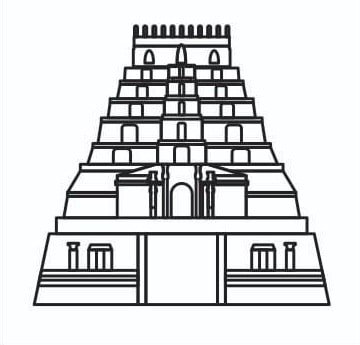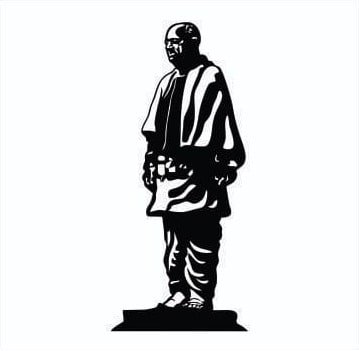Mahatma Gandhi needs no introduction. There are enough historical references, literature, anecdotes, incidents and experiences that have touched the lives of several people, not only in India but worldwide.
The name Mahatma Gandhi transcends the bounds of race, religion and nationality and has emerged as the prophetic voice of the 21st century. Remembered for his passionate adherence to the practice of non-violence and humanism, his birth anniversary on 2nd October is celebrated as the International Day of Non-Violence. After Buddha and Jesus, he once again demonstrated that non-violence could also be an effective instrument of social change.
Mahatma Gandhi was born on October 2, 1869. This year, Gandhi Jayanti will mark the 153rd birth anniversary of Mahatma Gandhi. On the occasion of completing 75 years of Independence this year, let us remember the Gandhian way of life and its relevance in the 21st century.
Even though Gandhiji’s life went through several turning points on its journey of becoming Mahatma from an ordinary Mohan, his life followed a relatively straight path. The starting point of his line was his faith in Rama, installed by the mantra ‘Ramanama’. As a young boy, Mohan was introduced to his conviction by the maidservant, Rambha. When Mir Alam’s stick hit Gandhiji’s head during his middle years in South Africa, the name ‘Rama’ was uttered from his lips. When three bullets pierced his body 74 years ago, ‘Hey Ram’ were his last words. Gandhi’s unwavering faith in Ram and Ramayan threaded the three crucial points of his life journey – the beginning, the middle and the end.
The name ‘Mahatma Gandhi’ is synonymous with the Indian Independence Movement. His philosophies and how he educated the people to build a country free from the shackles of foreign rule but also inequality and societal evils are legendary. Are the ideas and thoughts of Bapu given the same pedestal and importance as our outward reverence for him? Let’s look at some of the principles and values of Gandhism.
Satya, or Truth, one of the fundamentals of Gandhism, is a value found in many religions. It means being true to your thoughts, actions and speech. Often extended to Satyagrah, it is a significant part of Gandhism. Satyagrah means holding onto truth, practising non-violence, being respectful to one and all, and respecting the value of labour and economic techniques.
Ahimsa or Non-Violence, the paramount principle of Gandhism, does not mean cowardice or passive resistance. A staunch believer in peaceful resolutions of conflicts, Gandhiji never resorted to violence to address differences between people, nations, races or religions. His protests were non-violent, from Civil Disobedience Movement to the Non-Cooperative Movement.
Gandhism incorporates the philosophy of practical living. He believed in self-sufficiency and encouraged the nation to be self-sufficient. It meant producing products domestically and banning imported goods to boost the struggle for Independence. He initiated the concept of handspun khadi, a step towards self-sufficiency and a protest against the British cotton industry.
It is no secret that lies, opportunities and favouring of the rich have been the way of life in Independent India for decades. Yet there is still a glimmer of hope! Irrespective of politics and power, the people of India are still relatively grounded in their cultural roots and traditions and hold moral values at an exalted position. So the question today is whether this country’s citizens are nearing the ideology of Satyagraha, Ahimsa or Self- sufficiency?
This may be why many auto drivers hold onto the money and valuables left behind by their customers in the hope of reencountering them in the exact location. They often go out of their way to return the valuables to the rightful owner. Stories of villages’ sons and daughters returning to their roots for the betterment of the collective are heard from across India.
Individuals don’t succumb to distorting the truth even at the expense of lifetime imprisonment. NGOs continue to rehabilitate defaulters, and individuals leave their high-paying job to dedicate their lives to the service of the underprivileged. NGOs teach technical skills to victims to make them self-sufficient. Parents find reasons to spend money out of their comfort zone to educate their daughters, and the divide between the sons and daughters diminishes with each passing day.
The Gandhian way of life and the principles of Gandhism seem to come to the forefront when citizens protest with marches and candlelight. The protest in question is not supported with arguments and violence but rather with fasts and peaceful dharnas. On the other hand, we witness the cruel face of humanity when the lynching of dogs, the killing of Dalit children and violent protests burst out on every street and corner. From communal fights to violent outbursts over parking, these everyday incidents question a person’s belief in Gandhism.
There is a glimmer of Gandhism where there are indigenous products, local artisans and encouragement and an environment for nurturing domestic talent. The Gandhian principle of self-sufficiency is at the forefront when organisations provide a platform to local and indigenous art and craft clusters. We follow Mahatma’s steps when India works toward each individual’s collective progress.
But when there is a line of prominent industrialists making the business profitable for only some, whereas most small shop owners suffer at the hands of mass globalisation, we travel back to the period under foreign rule. The only difference, it is not Indians versus Britishers but Indians vs Indians!
Making an objective analysis of where Gandhism stands today is a daunting task. There is so much on both sides of the coin that there is a negative and positive reaction to every action. For every incident which stands against Gandhian philosophy, there is someone who proves that Gandhism is still alive.
For every report of violence and abuse, there are also images of peaceful marches. Where people live extravagantly, there are also public figures who lead simple lives. For every religious or communal dispute, friendships and brotherhood blossom with the ‘other’ neighbours.
The influence of Gandhism in our lives can’t be ignored. It is imperative to spread the message that the mind takes precedence in being humble, whereas the heart needs to include one and all within its fold of acceptance, love and humanity.


















